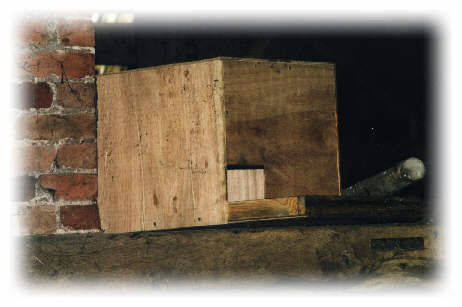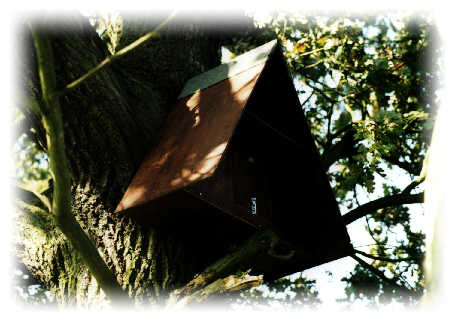-
- Habitat
needed
- Habitat
lost
- Habitat
maintenance
- Habitat
corridors
- Habitat
grants
- Nest
sites lost
- Nest site maintenace
- Nest Boxes
- Causes of
death
Main index
|
- Nest
sites maintenance

-
- The
availability of foraging habitat is of course
essential but for breeding purposes there must
also be roost and nest sites available.
Generations of Barn Owls use the same nesting
sites year after year, sometimes over centuries.
Nesting sites are usually only abandoned when the
foraging habitat has been lost or the nesting
site itself has been substantially modified,
destroyed or subjected to increased human
disturbance. The protection of traditional or
potentially suitable nest sites within prime
habitats where Barn Owls are known to be present
is of major importance for the bird's survival.
Barn Owls are not restricted to nesting just in
old barns; modern barns can attract these birds
especially if a suitable darkened site, in the
form of nest box, is provided. The box is
positioned so that the owls have an unhindered
flight path into the box and rats and farm cats
cannot gain easy entry.
-
- Barn Owls
will also nest in a a stack of bales and can also
be encouraged to select a specific part of the
stack if a tunnel is left between bales. This is
best positioned about two-thirds of the way up
the outside face of the stack in an open dutch
barn, or on the inner face within a more enclosed
barn. The tunnel should be about 12" wide
and about three bales deep. To prevent owlets
from falling out of these tunnels a baffleboard
about 10" deep should be firmly wedged into
the lower part of the entrance to the tunnel. To
increase the birds' opportunity of breeding
without being disturbed these tunnels should be
constructed in the rear of the stack which is
normally the last part to be removed. Many
farmers already construct tunnels such as these
in a triple stack of bales at the rear of the
barn, left specially for this purpose. This stack
remains in place for as long as the bales remain
suitable for this purpose, whilst new bales are
annually added to them, and used from the rest of
the barn in the usual manner. Ideally it is
preferable to construct two such nesting tunnels
to provide the owls with alternative sites. Even
better insert a specially designed box when the
stack is first built.

When traditional
nesting or roosting sites have been lost provision of
nesting space or boxes can be included in new and
renovated buildings though any increased human activity
would also have to be taken into consideration in regard
to the suitability of such sites. If such provision
cannot be made it may be possible to provide an
alternative artificial nest or roost in which case a nest
box should be placed in a quiter site nearby preferably
well before the traditional site is likely to be
disrupted. Boxes are normally erected between October and
March to avoid the possibility of any disturbance to the
birds which may already be occupying the site during the
breeding period.
Wherever
possible old hedgerow or parkland trees with cavities should be
left standing, unless they present any danger. Tall
hollow stumps can be capped with wooden boards to provide
spacious sheltered roosts and possible nest sites.
Outdoor boxes can also be erected in tall trees
especially when a nearby site has blown down or been
felled. If possible plant native tree species when new
woodlands or hedgerows are being considered so that in
the long-term new tree sites will become available to
owls and other birds.
We are currently
placing nest boxes, if you have control of any open land
or old buildings and would like us make an assesment
regarding suitability for nest boxes then please Contact us. We do not make a charge
for these boxes, they are funded by voluntary donations,
membership fees and sponsorships.
|

